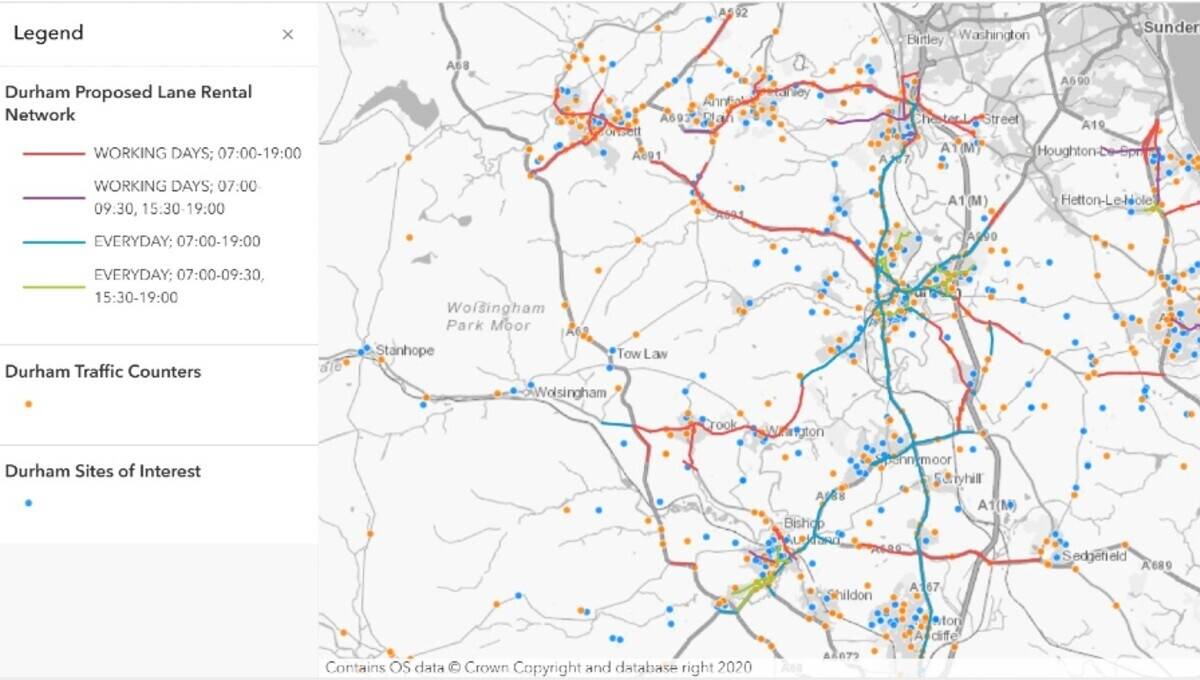London, 01 March, 2011 - Boundary Commission changes affecting more than 6,000 properties in Huntingdonshire have been assimilated across the region thanks to the high quality of the District Council's address database, the Local Land and Property Gazetteer (LLPG).
Changes to boundaries affect Council Tax, Electoral Registration and administration across Local Government.
Administrative and electoral boundaries change infrequently but are under constant review to ensure that they are an up to date reflection of real life communities with appropriate electoral representation. The process to change parish and ward boundaries can take several years before the necessary statutory instrument is drawn up. In the final calculations the Huntingdonshire boundary changes of 2010 affected 27 out of 84 parishes, 3 were abolished, 4 new parishes were created and the remainder saw changes to their boundaries. The changes also affected 8 out of the 29 electoral wards and most significantly more than 6,000 properties.
Huntingdonshire District Council's Local Land and Property Gazetteer is central to this project to assimilate and communicate the boundary changes. The first and most crucial requirement was to identify, for Council Tax, the number of properties that would change parish. This would then enable the Parish Councils to calculate the budget for their precept, the local component of Council Tax. This was achieved using parish and ward codes held within the LLPG and new electronic boundary maps supplied by Ordnance Survey. Huntingdonshire's LLPG team were able to view properties at the intersections of the old and the new boundaries and run a series of processes in order to identify the affected properties, prepare for the change over and then communicate the changes to everybody that needed them.
Once the properties had been identified, the information was supplied to Parish Councils. The exercise was repeated immediately before Council Tax Billing commenced in March 2010 to ensure accuracy. A similar analysis was undertaken for Electoral Registration to identify properties where both the ward and the parish had changed.
"We believe in making our LLPG work for the authority to ensure it provides a good return on the investment of the last few years," said David Lloyd, Local Land & Property Gazetteer Manager at Huntingdonshire District Council. "Our LLPG is now used across the authority by all our main service areas and it certainly facilitated the management and communication of the boundary changes when they came into effect. This project not only engaged with internal users of the gazetteer but also external users such as the County Council and the Fire and Rescue Service."
CONTACTS:
Contact: Gayle Gander, Head of Marketing, +44(0)207 747 3500, E-mail: [email protected], www.intelligent-addressing.co.uk
Notes to editors:
The NLPG is a joint venture between all local authorities in England and Wales, the Local Government Information House, part of the Local Government Group and Intelligent Addressing Limited. It is the authoritative, national address list that provides unique identification of land and property and conforms to BS 7666 (2006). Local authorities in England and Wales have a statutory responsibility for street naming and numbering. They update the NLPG on a continual basis, enabling daily updates to be available to users.
Intelligent Addressing is an information management specialist and data provider, focusing on land and property data, particularly addresses. As well as being the joint venture partner with local government in the development of the NLPG, IA also manages the national datasets for local government; the NLPG and the National Street Gazetteer (NSG). Data is an essential yet high-cost resource to maintain. IA helps organisations find, utilise and manage the information that they need and provides services to any organisation that depends on the accuracy, manageability and versatility of its information.
Local Government Information House is part of the Local Government Group. LGIH concentrates on core projects that have maximum benefit for the whole of local government. To this end, LGIH focuses on geographical information-related projects, as the standardisation of this type of data affects more than 80 per cent of what local government does. LGIH acts as an intermediary between the public and the private sector enabling it to negotiate with private companies on behalf of local authorities in order to provide key parts of a technical infrastructure for improved service delivery.
Changes coming in 2011 Addressing information from local authorities and Ordnance Survey will be brought together in a new joint venture partnership, GeoPlace LLP, to create a national address gazetteer database that will provide one single definitive source of accurate spatial address data for England and Wales. Subject to agreement with Scottish Local Government it is planned to incorporate the spatial address data from the One Scotland gazetteer. More information will be available in the near future.
Administrative and electoral boundaries change infrequently but are under constant review to ensure that they are an up to date reflection of real life communities with appropriate electoral representation. The process to change parish and ward boundaries can take several years before the necessary statutory instrument is drawn up. In the final calculations the Huntingdonshire boundary changes of 2010 affected 27 out of 84 parishes, 3 were abolished, 4 new parishes were created and the remainder saw changes to their boundaries. The changes also affected 8 out of the 29 electoral wards and most significantly more than 6,000 properties.
Huntingdonshire District Council's Local Land and Property Gazetteer is central to this project to assimilate and communicate the boundary changes. The first and most crucial requirement was to identify, for Council Tax, the number of properties that would change parish. This would then enable the Parish Councils to calculate the budget for their precept, the local component of Council Tax. This was achieved using parish and ward codes held within the LLPG and new electronic boundary maps supplied by Ordnance Survey. Huntingdonshire's LLPG team were able to view properties at the intersections of the old and the new boundaries and run a series of processes in order to identify the affected properties, prepare for the change over and then communicate the changes to everybody that needed them.
Once the properties had been identified, the information was supplied to Parish Councils. The exercise was repeated immediately before Council Tax Billing commenced in March 2010 to ensure accuracy. A similar analysis was undertaken for Electoral Registration to identify properties where both the ward and the parish had changed.
"We believe in making our LLPG work for the authority to ensure it provides a good return on the investment of the last few years," said David Lloyd, Local Land & Property Gazetteer Manager at Huntingdonshire District Council. "Our LLPG is now used across the authority by all our main service areas and it certainly facilitated the management and communication of the boundary changes when they came into effect. This project not only engaged with internal users of the gazetteer but also external users such as the County Council and the Fire and Rescue Service."
CONTACTS:
Contact: Gayle Gander, Head of Marketing, +44(0)207 747 3500, E-mail: [email protected], www.intelligent-addressing.co.uk
Notes to editors:
The NLPG is a joint venture between all local authorities in England and Wales, the Local Government Information House, part of the Local Government Group and Intelligent Addressing Limited. It is the authoritative, national address list that provides unique identification of land and property and conforms to BS 7666 (2006). Local authorities in England and Wales have a statutory responsibility for street naming and numbering. They update the NLPG on a continual basis, enabling daily updates to be available to users.
Intelligent Addressing is an information management specialist and data provider, focusing on land and property data, particularly addresses. As well as being the joint venture partner with local government in the development of the NLPG, IA also manages the national datasets for local government; the NLPG and the National Street Gazetteer (NSG). Data is an essential yet high-cost resource to maintain. IA helps organisations find, utilise and manage the information that they need and provides services to any organisation that depends on the accuracy, manageability and versatility of its information.
Local Government Information House is part of the Local Government Group. LGIH concentrates on core projects that have maximum benefit for the whole of local government. To this end, LGIH focuses on geographical information-related projects, as the standardisation of this type of data affects more than 80 per cent of what local government does. LGIH acts as an intermediary between the public and the private sector enabling it to negotiate with private companies on behalf of local authorities in order to provide key parts of a technical infrastructure for improved service delivery.
Changes coming in 2011 Addressing information from local authorities and Ordnance Survey will be brought together in a new joint venture partnership, GeoPlace LLP, to create a national address gazetteer database that will provide one single definitive source of accurate spatial address data for England and Wales. Subject to agreement with Scottish Local Government it is planned to incorporate the spatial address data from the One Scotland gazetteer. More information will be available in the near future.



